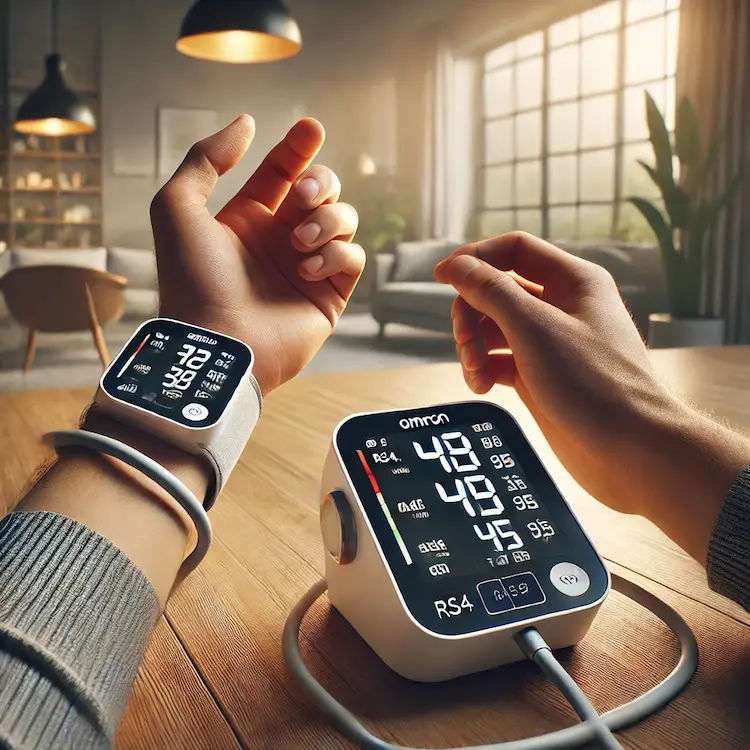When it comes to monitoring blood pressure at home, accuracy is the most critical factor. Among the leading brands in this space, Omron stands out for producing clinically validated, reliable devices. Two of their most popular wrist blood pressure monitors, the Omron RS4 and Omron RS7, are frequently compared by users looking for the most precise and user-friendly option. But which one provides more accurate readings?
This comprehensive guide will break down the differences between the Omron RS4 and RS7, evaluating their features, accuracy, usability, and technological advancements. We’ll explore how wrist blood pressure monitors compare to upper-arm models, discuss potential health implications, and provide actionable recommendations for users.
Blood pressure monitoring plays a vital role in managing hypertension, cardiovascular diseases, and overall health. According to the World Health Organization (WHO), an estimated 1.28 billion adults worldwide suffer from hypertension, with many cases going undiagnosed due to a lack of routine monitoring.
An inaccurate reading can lead to:
For these reasons, choosing a highly accurate monitor is essential, especially for individuals relying on at-home monitoring to track their cardiovascular health.

Traditionally, upper-arm blood pressure monitors are considered the gold standard for accuracy. However, wrist blood pressure monitors, like the Omron RS4 and RS7, offer greater convenience and portability.
| Feature | Wrist Monitors (e.g., RS4, RS7) | Upper-Arm Monitors |
|---|---|---|
| Accuracy | Slightly less due to arm positioning variability | Generally more accurate |
| Portability | High (compact and easy to carry) | Bulkier, less portable |
| Ease of Use | Easy to wear but requires proper positioning | Requires correct cuff size |
| Comfort | More comfortable, especially for larger arms | Can feel tight or restrictive |
| Suitability | Good for active individuals or travelers | Better for clinical accuracy |
While wrist monitors can be accurate, they require proper positioning at heart level to avoid misreadings. Omron has incorporated advanced positioning sensors in models like the RS7 to improve accuracy.
Now, let’s break down the key features of the Omron RS4 and Omron RS7 to determine which device provides the most accurate readings.
| Feature | Omron RS4 | Omron RS7 |
|---|---|---|
| Clinical Validation | Yes | Yes (AFIB detection included) |
| Advanced Positioning Sensor | No | Yes |
| IntelliSense Technology | Yes | Yes |
| Cuff Positioning Indicator | Yes | Yes |
| Irregular Heartbeat Detection | Yes | Yes |
Winner: Omron RS7 – The RS7 includes an AFIB (Atrial Fibrillation) detection feature and an advanced positioning sensor, making it more reliable for detecting irregular heart rhythms and ensuring correct positioning.
| Feature | Omron RS4 | Omron RS7 |
|---|---|---|
| Cuff Size | Fits wrist circumference 13.5–21.5 cm | Same as RS4 |
| Ease of Use | Easy to use | Same as RS4 |
| Memory Storage | 30 readings | 100 readings |
| Bluetooth Connectivity | No | Yes (syncs with Omron Connect app) |
Winner: Omron RS7 – With 100 memory slots and Bluetooth functionality, RS7 offers better tracking and app integration.
| Feature | Omron RS4 | Omron RS7 |
|---|---|---|
| Display Type | LCD | Large LCD |
| Backlight | No | Yes |
| Indicator for Hypertension | Yes | Yes |
Winner: Omron RS7 – Its larger screen and backlight make it more user-friendly, especially for elderly users.
Several studies have tested wrist blood pressure monitors like the Omron RS4 and RS7 against gold-standard mercury sphygmomanometers and upper-arm digital monitors.

Regardless of whether you use the Omron RS4 or RS7, you can improve accuracy by following these guidelines:
If accuracy is your top priority, the Omron RS7 is the better choice due to:
However, if you only need a basic, clinically validated wrist monitor, the Omron RS4 is still a reliable and budget-friendly option.